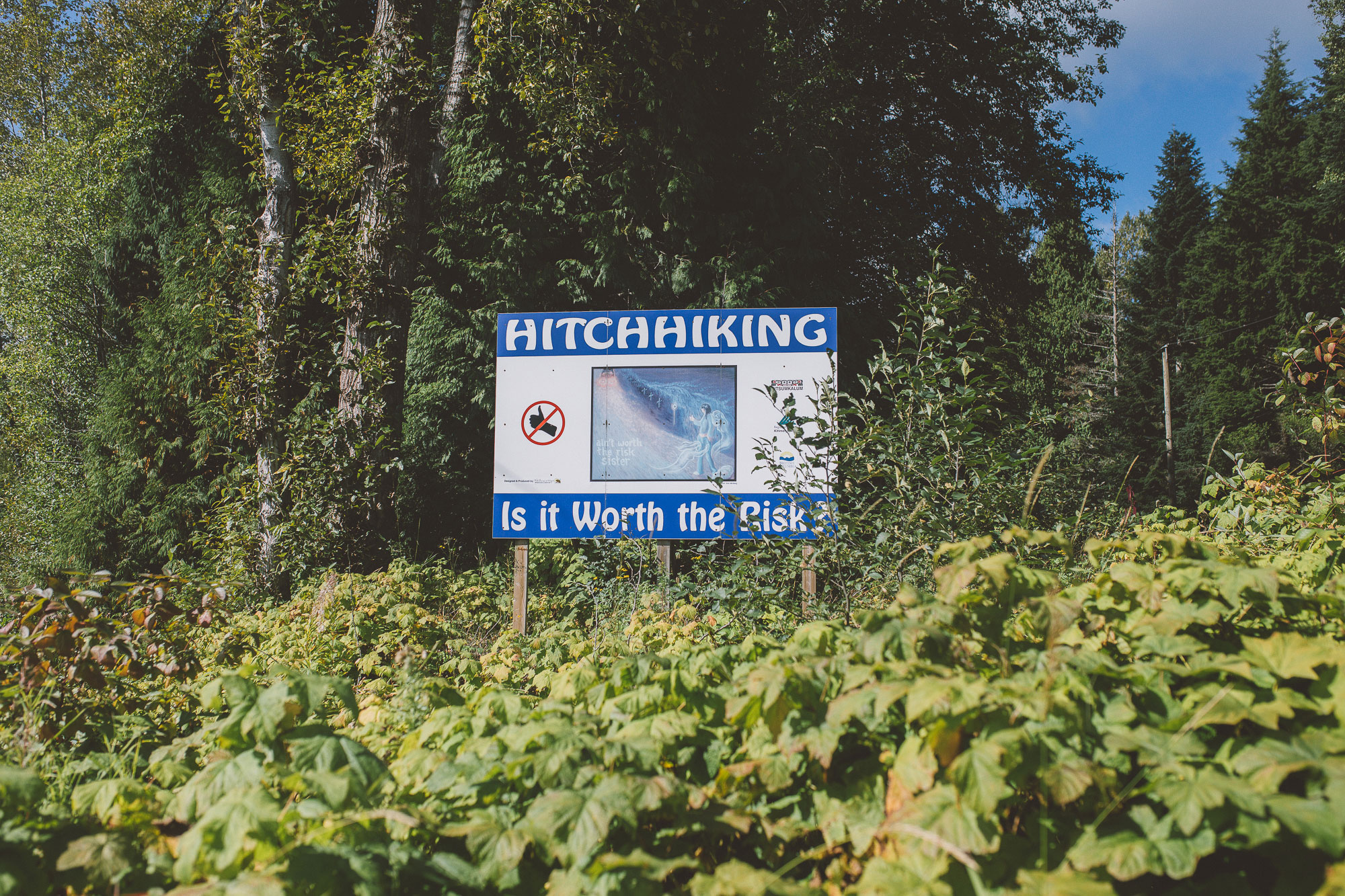Terrace to a rest stop along the Skeena River, BC
Traditional territory of the Vuntut Gwitchin and the Tetlit Gwich’in
Sun and cloud, all of a sudden you could see the cloudy mountain passes we’d cycled through
Hung around with my hosts in Terrace (whom I regrettably did not photograph) in the morning while the boys got ready for school and the parents got ready for work. Eating apples straight off a tree in the morning was a really cool experience. When the local bike shop opened I stopped by for a repair, left town around 12:30; made it about 30 km before I broke another spoke (I’m carrying a lot of weight) and then hitchhiked back to Terrace to get it fixed. Left town again around 3:30 and made it a bit farther than I had earlier to set up camp beside the Skeena River.

This stretch of road is called the Highway of Tears, a sombre reminder of the dozens of mostly Indigenous women who have gone missing or been found murdered along the highway in the last several decades. It’s something that I’ve heard about, something I’ve thought about in more or less abstract terms. Like the REDress Project responding to the estimated 1,200 missing and murdered Indigenous women in Canada.
But it was different being on that highway myself. Seeing ‘missing’ posters offering rewards for information on the whereabouts of young women. Seeing crosses with flowers and painted stones. “Ain’t worth the risk, sister,” reads the hand-painted portion of a couple anti-hitchhiking signs between Kitwanga and Prince Rupert. I didn’t photograph a lot of the visuals out of respect for the victims, but the story still needs to be told.
I’ve done a bit of research and will share a bit more, along with a couple quotes from some of the locals I’ve talked to, but for now just wanted to acknowledge the privilege I felt in feeling safe and confident as a White man to hitchhike 30 km to Terrace, passing those same memorials and signboards on my way back into town. I thought for about a minute before putting my thumb out on the roadside. About a minute is what privilege looks like.